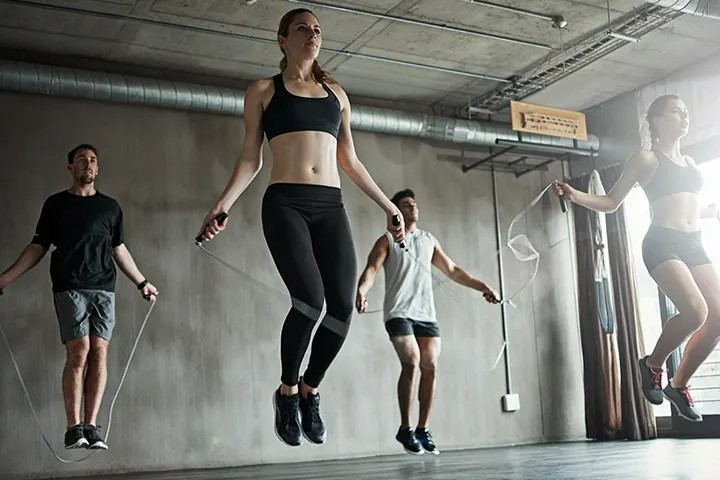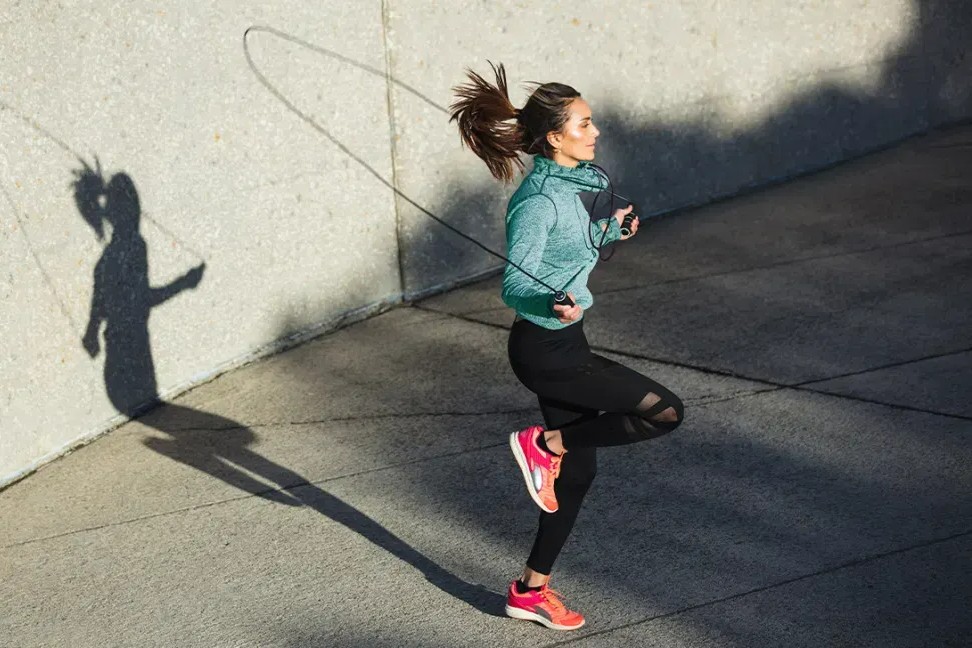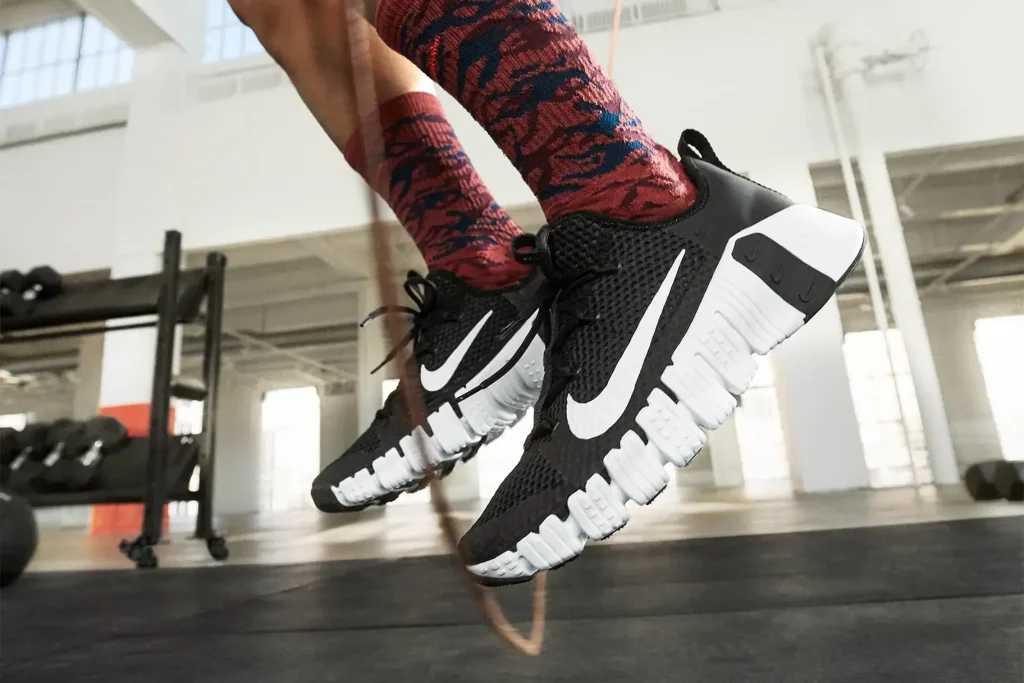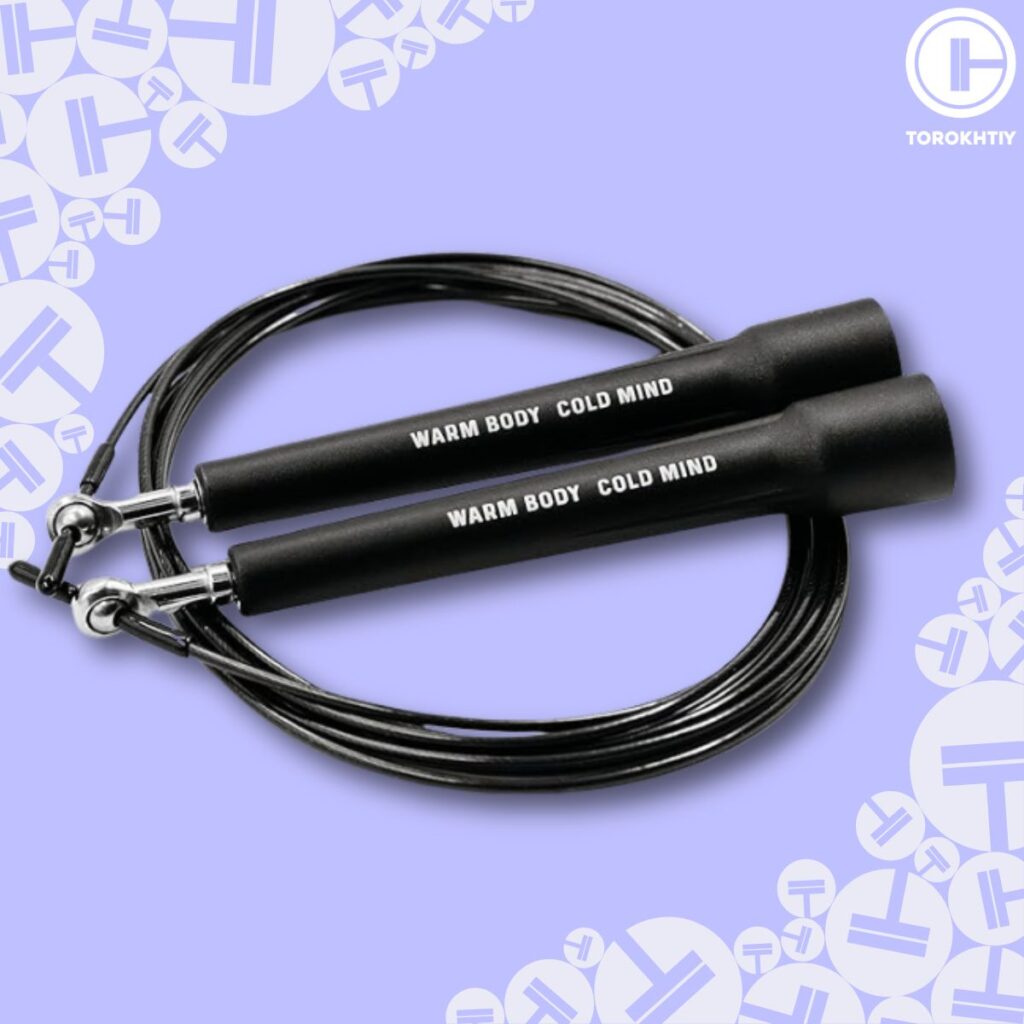How to Get Better at Jumping Rope – 7 Easy Tips to Follow
Author:
Unlock your full potential by engaging with our experts and community! Have questions about your fitness journey or looking for expert advice on weightlifting techniques? Don’t hesitate — leave a comment below and Ihor Shymechko will provide a personalized answer and insights to help you reach your goals.
Torokhtiy is reader-supported. Some links are affiliate links, and we may earn a commission at no extra cost to you. See our disclosure page for details.
When it comes to cardio, jumping rope can be placed at the very top of the list of great exercises. However, it’s also one that requires proper technique, and so many people find it difficult to jump rope for longer periods of time. That’s why we’ve decided to dedicate an article to teach you how to get better at jumping rope by following just a few easy tips.
In the paragraphs below, you will learn all about proper jump rope technique, tips for jump rope you can follow to improve, and how to choose the best rope for you.
Getting better at jumping rope is all about learning the proper technique and then practicing often. You should always keep in mind three vital movements – land on the balls of your feet, jump low, and rotate only through the wrists.

Learning to Jump Rope
When watching someone jump rope, it looks easy and breezy; however, once you try doing it, it becomes a different story. And that’s not because jumping rope is incredibly difficult, but because you don’t know the right way to do it. With that said, below, we will be offering you some key jump rope tips that you need to adhere to in order to start improving.
Holding the Rope
How you position your hands throughout the exercise is very important, which is why you want to keep your focus on two main principles:
- Symmetry: your hands have to be at a similar distance from the center of your body.
- Movement: you don’t want to be moving either the elbows or the shoulders. The rotation has to be generated mainly through the use of the wrists.
Consistent Bounding
The key to getting better at jumping rope is consistent bounding. That’s why you want to focus on having less and less distance between your feet and the ground. You should be jumping just slightly above the ground – you want to avoid tucking your knees, and you want to have your toes pointing down after every jump.
Another key reminder here – always allow for some slight bend in your knees and try to land as softly as you can on the balls of your feet. This will minimize the stress on the joints and allow you to keep going for longer.
Learning the Basic Jump
Now that we’ve got the fundamentals covered let’s take a look at what the technique for the basic jump looks like.
- Your feet have to be close to one another when jumping.
- You should aim to jump on your midsoles
- Your jumps need to be quick and low in height
- The knees should have a slight bend throughout the entire exercise
- Try to keep your spine in a neutral position with your head looking forward
- Your shoulders should be pulled back and your chest up
- Use the power of your wrist to turn the rope and minimize the movement in the shoulders and in elbows.
The basic jump is one of the best ways to jump rope for beginners, as it teaches you to maintain rhythm and timing. Along with that, it doesn’t require any complex movements that feature both the use of the hands and the feet, so it’s easier to learn.

Jumping Rope Benefits
With so many cardio exercises you can do that are quite easier to learn, you may be wondering why you should be putting effort into jumping rope. Well, let’s take a look at three benefits that make jumping rope worth it.
Super Effective
Jumping rope is a highly effective workout, meaning you can burn a lot of calories in a short period of time. Research within the fitness community has found that jumping rope for one hour enables you to burn around 1000 calories. And when you compare that to more strenuous activities such as running or doing the stair master, you will truly appreciate it. Additionally, if you’re an athlete, jumping rope helps you improve vital aspects of your performance, such as agility, foot speed, and coordination.
You Can Do it Any Time; Any Place
Jumping rope can be done anywhere at any time. You simply need to have a jump rope and some free time on your hands. It’s easy to store, so you can carry it everywhere with you – on an out-of-town work conference, when out with the kids in the park and even during your vacation near the beach. Along with that, for just 30 minutes of intense work, you can get all the exercise you need without having to look up gyms or worry about traffic. This makes jump rope one of the best workouts for people with busy schedules.
It’s Fun
Unlike most cardio workouts, which tend to be boring and long-lasting, jumping rope can be a quick and fun exercise. You can take your headphones, blast your favorite playlist and enjoy 30 minutes of jump-dancing. Additionally, as you start to get better, you can learn different variations of jump rope and various techniques, start experimenting with new movements and make it an even more exciting workout.

Tips to Get Better at Rope Jumping
“How to get good at jump rope” is a question we get asked often and that we see a lot of people looking for the answer to. And as with all other forms of exercise, the key is consistency – the more you do it, the better you will become. With that said, some of the tips we will provide you with below will make the process of becoming good easier and smoother.
Land on the Balls of Your Feet
Aiming for a soft landing is vital for getting a rhythm when jumping rope. That’s why you should always strive to land on your midsoles and then jump up immediately after landing. That will make the workout feel easier, and it will help you become faster. Additionally, if you’re jumping rope as a way to improve athletic performance doing it with this technique in mind will help you develop faster feet.
Jump Low and Fast
When jumping, you shouldn’t be tucking your feet or getting really high off the ground. Instead, your jumps should be low in height and super quick. That’s the only technique that will allow you to jump for more than 5 minutes, as all the other ones will have you struggling to get in the air and get into a rhythm.
Use Your Wrists, Not Your Arms
The only movement of the upper body should come from the wrist. That’s the only part of your arms that should be moving, and it’s mainly responsible for getting the right rhythm and doing revolutions effectively. That’s why you should aim to minimize the movement in your shoulders and elbows and instead focus on moving your wrists quickly and smoothly in a circular motion.
Find the Correct Rope Length
We will be discussing how to find the proper rope length below, but for now, you should remember that ropes aren’t one-size-fits-all. Depending on your height and arm length, the perfect jump rope for you will be different in comparison to someone who is taller or shorter than you. And if you’re jumping with a rope that’s either too short or too long will make it impossible to get into a good rhythm and keep on improving.
Keep Your Hands Above the Waist
Where your hands are positioned is also vital for good jump rope technique. However, their placement is largely dependent on the length of the rope you own. Ideally, the hands should be just above the waistline, comfortably bent, and about a foot away from the sides of your body.
Find a Rhythm
One of the most difficult things for beginners is finding a rhythm. And it will take practice. However, by learning how to get into a rhythm, you will be able to jump faster, and it will also make the workout more fun. You can think of it as hitting your stride when jogging. To find your rhythm, you can try to do a certain number of revolutions over a particular period of time – for example, aim for 150 repetitions in the course of a minute. With that said, rhythm is intensely individual, so try to find what feels comfortable to you, depending on your experience and endurance.
Practice Often
As we already mentioned, jumping rope regularly is the best way to keep progressing. When people ask us “how to improve jump rope,” the first thing we always say is, “Practice more.”. If you start jumping rope 2-3 per week, you will quickly see that you’re improving. And if you can do it every day as a warm-up for 10-15 minutes, you will soon see that you’re able to easily get into a rhythm and jump for long periods of time without stopping. As with all kinds of sports, consistency is what matters most – if you jump rope often and you work on improving your technique every time, you will soon be doing the basics for fun and you will start to build on them by learning tricks, going faster, and so on.

How to Choose a Jump Rope?
There’s an abundance of different kinds of jump ropes on the market, and if you’re a beginner, all that choices might be slightly overwhelming. That is why we’re here to help you choose the best option for you, depending on your fitness goals. For starters, you should know there are four main types of jump ropes:
Basic
For beginners, basic ropes might be the best choice as they’re mainly aimed at those that are just now learning the fundamentals of jumping rope. They’re more cost-effective compared to other options on the market and are still an okay choice for a good workout. Typically, they’re thicker than speed ropes and lighter than weighted ones. Most of them are made out of PVC plastic with handles made out of foam or rubber as a way to make the experience nicer for beginner jumpers.
Speed
You can guess what the idea behind this rope is just from its name. Speed ropes are super lightweight, with the idea for you to be able to move them as fast as you can. Most are made from a thin vinyl cord and are best used in gyms, as they can otherwise cause wear and tear on surfaces such as pavement.
Speed jump ropes are best for high-intensity workouts where you’re trying to be super quick. Because of that, they’re used by boxers and other athletes as a way to improve footwork and get some cardio in.
Weighted
As you can guess, weighted jump ropes are ones that are a bit heavier than the previous two options. Because of that extra weight, they require more energy to be moved and add more resistance, which you mostly feel in your upper body. The weight typically varies between one and six pounds, and these ropes are mostly used by experienced athletes who want to make their jumping workouts more challenging.
Beaded
Beaded jump ropes are mainly used in rhythmic jumping competitions because of the noise they make when hitting the ground. However, they’re also suitable for beginners. This rope tends to be light, but the beads do add some resistance and prevent the rope from tangling. This jump rope is also good for indoor and outdoor use if your family can deal with the noise it makes.
Which kind of rope you choose to get depends on your workout goals and experience. For beginners, we would recommend a more basic rope as that’s the best one to help you get a feel for the exercise. After that, you can pick up a speed rope as a way to improve athletic performance and conditioning. When it comes to an exact model, we’ve enjoyed using the WBCM Adjustable Jump Rope.
WBCM Adjustable Jump Rope
How to Choose the Length of a Jump Rope?
Now that you’ve chosen what kind of rope best suits your training needs let’s learn how to pick the right length. You can do this pretty easily just by following these steps:
- Take the rope and grab the handles.
- Step on the middle of the rope, looking to have the same length on both sides of your body
- Pull the rope up toward your shoulders.
- Check whether the cables hit – it has to be somewhere around your armpits for the perfect length.
If you’re buying a rope online, make sure it’s an adjustable one – that way, you will easily be able to correct the length at home, and you won’t have to worry so much about length. Additionally, having an adjustable rope will mean that all your family members can also use it, which is always a nice bonus.
FAQ
How Long Does It Take To Get Good at Jump Rope?
Practicing regularly can get the hang of the basics in less than two weeks. Front there on, how fast you improve and how much you learn depends on how often you’re jumping.
Is It Ok to Jump Rope Every Day?
Yes, as long as you’re not injured and you’re recovering properly. As with all forms of exercise, if you’re overdoing it and causing yourself harm, it’s not okay to practice every day. However, doing short 15-20 minute-long jumping rope workouts every day is totally okay, especially if you’re not feeling any discomfort or soreness afterward.
Why Is Jumping Rope So Hard?
Unlike other forms of cardio, jumping rope requires you to not only have endurance but also learn a technique, making it difficult for beginners. Additionally, jumping rope requires speed, coordination, and agility, which are not easy to develop, especially for people who have never practiced any sport.
Conclusion
Figuring out how to get better at jumping rope is not all that difficult. As with almost any other sport, it requires learning proper technique, practicing regularly, and finding the best possible equipment for you. Hopefully, this article helped you gain insight into all these vital factors.
Now you’re ready to become better at jumping rope and possibly turn it into your favorite form of cardio.
Finally, we wanted to ask for your opinion – how did you get better at jumping rope? Have you ever tried this form of cardio? Let us know down below.
Also read:
- Jump Rope Vs Speed Rope
- Does Jump Rope Make You Faster
- Speed Rope Vs Weighted Rope
- Does Jump Rope Work Abs
- Functional Fitness Jump Rope Workout
- What Is Digital Jump Rope
- Weighted Jump Rope Benefits
- How Long Should You Jump Rope
- What Muscles Does Jump Rope Work
- Jump Rope Guide
References:
- Try this 12-minute fat-burning skipping workout in the park this weekend // Evening Standard: https://www.standard.co.uk/escapist/wellness/skipping-aerobic-workout-benefits-burn-fat-build-endurance-a4440641.html
Why Trust Us?
With over 20 years in Olympic weightlifting, strength training, nutrition coaching, and general fitness our team does its best to provide the audience with ultimate support and meet the needs and requirements of advanced athletes and professional lifters, as well as people who strive to open new opportunities and develop their physical capabilities with us.
By trusting the recommendations of our certified experts in coaching, nutrition, and sports training programming, as well as scientific consultants, and physiotherapists, we provide you with thorough, well-considered, and scientifically proven content. All the information given in the articles concerning workout programming, separate exercises, and athletic performance, in general, is based on verified data.
The product testing process is described in more detail here.
Author: Ihor Shymechko
Pro Olympic Weightlifter, Coach
Best Results: Snatch – 208 kg,
C&J – 240 kg
Ihor has been a professional weightlifter since 1996, boasting over two decades of competition experience. His notable achievements include clinching the European Championship in 2009 and securing a silver medal in the 105kg division at the Senior World Championships in 2011. Ihor represented his country in the 2008, 2012, and 2016 Summer Olympics. After retiring from competitive weightlifting, he transitioned to coaching, leveraging his vast experience to guide athletes who now compete on both national and international stages.




Still have questions after reading our article? Unlock your full potential by engaging with our experts and community! Don’t hesitate — leave a comment below and Ihor Shymechko will provide a personalized answer and insights to help you reach your goals.